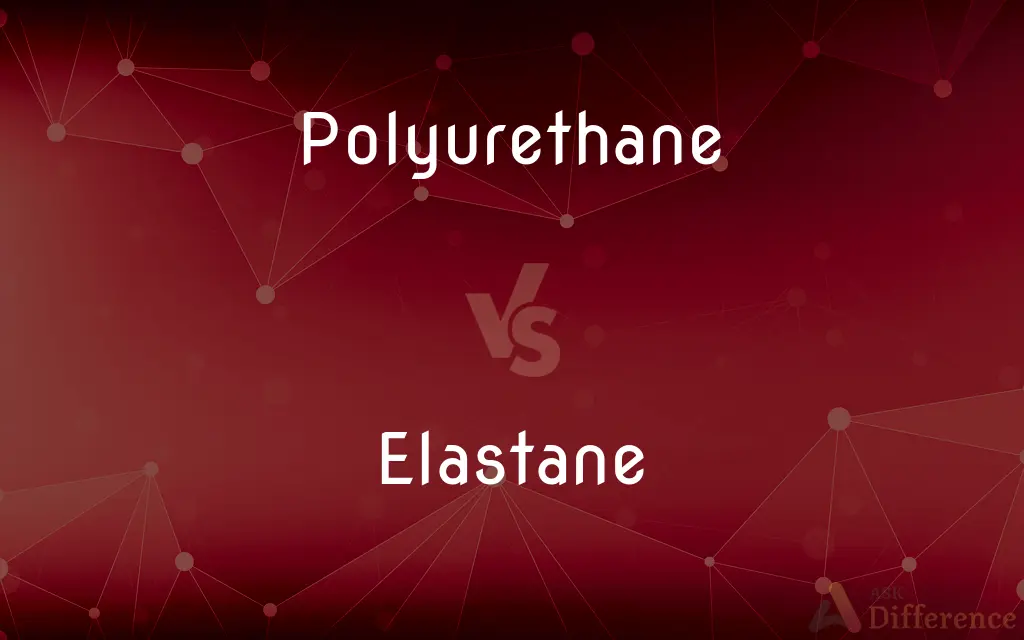Polyurethane vs. Elastane — What's the Difference?

Difference Between Polyurethane and Elastane
ADVERTISEMENT
Compare with Definitions
Polyurethane
Polyurethane (often abbreviated PUR and PU) is a polymer composed of organic units joined by carbamate (urethane) links. In contrast to other common polymers such as polyethylene and polystyrene, polyurethane is produced from a wide range of starting materials (monomers) and is therefore a class of polymers, rather than a distinct compound.
Elastane
An elastic polyurethane material, used for hosiery, underwear, and other close-fitting clothing.
Polyurethane
A synthetic resin in which the polymer units are linked by urethane groups, used chiefly as constituents of paints, varnishes, adhesives, and foams
Five coats of polyurethane
Polyurethanes serve a variety of uses
Elastane
Spandex, lycra.
Polyurethane
Coat with polyurethane paint or varnish
The sanded and polyurethaned floorboards
ADVERTISEMENT
Polyurethane
Any of various thermoplastic isocyanate polymers, widely varying in flexibility, used in tough chemical-resistant coatings, adhesives, and foams.
Polyurethane
(organic chemistry) Any of various polymeric resins containing urethane links; used in very many industrial and domestic applications.
Polyurethane
Any polymer containing [-NH.CO.O-] linkages; such polymers are much used as the basis of light but rigid foams for packaging (polyurethane foam) and for hard coatings, as on floors.
Polyurethane
Any of various polymers containing the urethane radical; a wide variety of synthetic forms are made and used as adhesives or plastics or paints or rubber
Share Your Discovery

Previous Comparison
Gushy vs. Mushy
Next Comparison
Tiger vs. Tigress














































